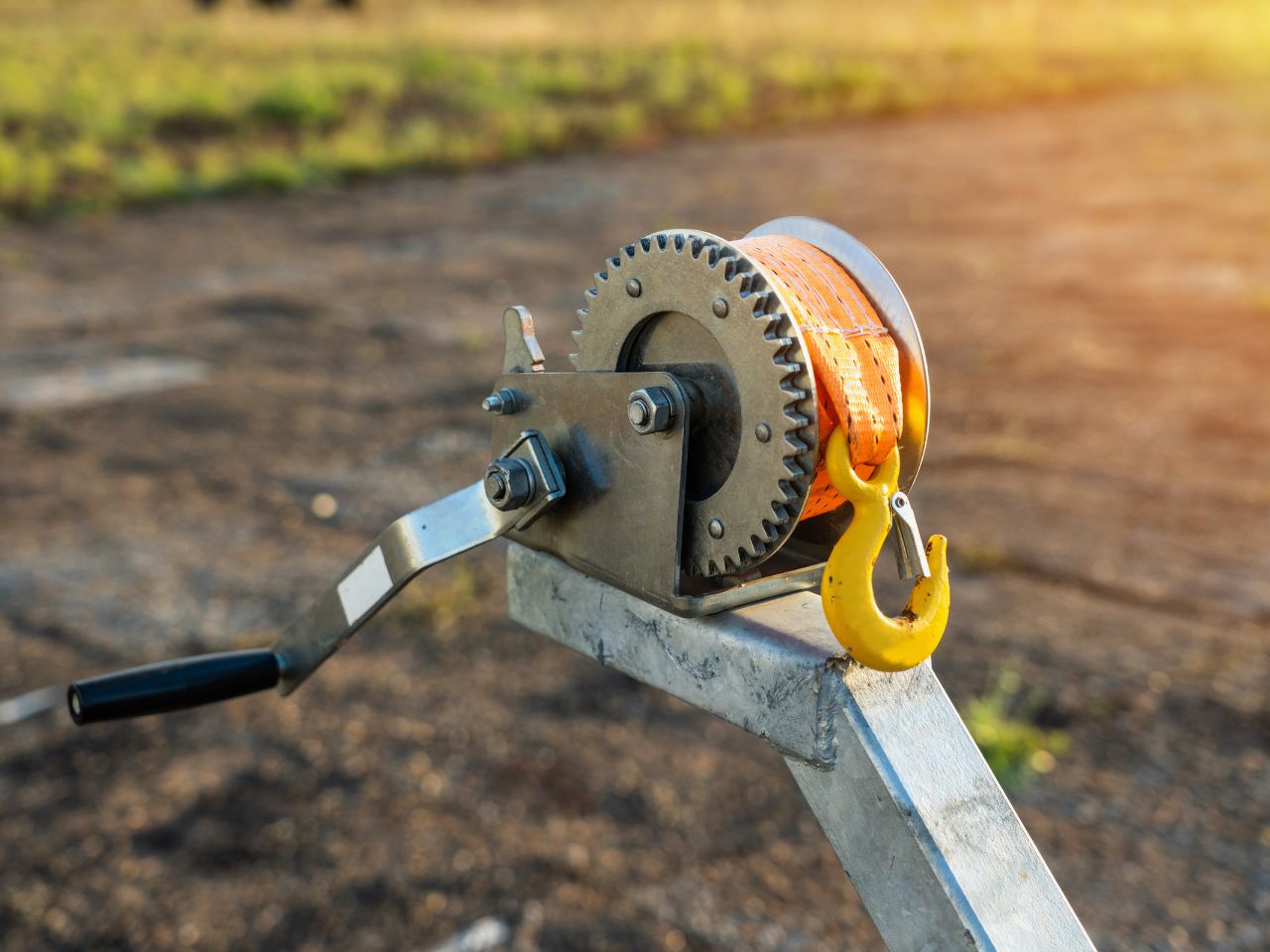A hand winch is a mechanical device used for lifting or pulling heavy loads using manual effort. It consists of a drum or spool onto which a rope or cable is wound, and a crank or handle that is turned by hand to create the necessary force to lift or pull the load. Hand winches are commonly used in various applications, such as pulling vehicles onto trailers, lifting small boats onto docks, raising loads in construction, and other tasks that require controlled manual force for movement.
Key features and components of a hand winch include:
- Drum or Spool: The cylindrical component around which the rope or webbing is wound. It provides storage for the rope/webbing and helps in applying force to the load.
- Rope or Webbing: The lifting or pulling element that is wound onto the drum. It provides the connection between the winch and the load.
- Handle or Crank: The lever that is manually turned to operate the winch. Rotating the handle creates tension on the rope or cable, causing the load to be lifted or pulled.
- Gearing Mechanism: Depending on the design, hand winches may incorporate gears to provide mechanical advantage, making it easier to lift or pull heavy loads with less effort.
Hand winches come in various sizes and weight capacities to accommodate different load requirements. They are often used in situations where power sources like electricity or hydraulic systems are not available or practical. Hand winches provide a simple and portable solution for lifting or pulling tasks, and they are commonly used in outdoor activities, construction, agriculture, and automotive applications.
When using a hand winch, it's important to follow proper safety guidelines and ensure that the winch is properly anchored and secured to a stable structure. Overloading a hand winch or using it improperly can lead to accidents or damage. Always refer to the manufacturer's instructions and safety recommendations for the specific hand winch model you are using.



